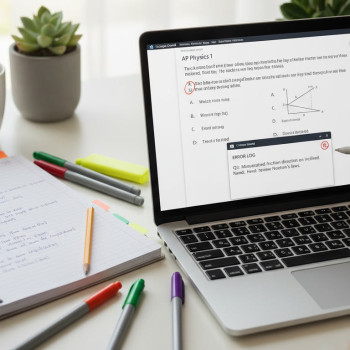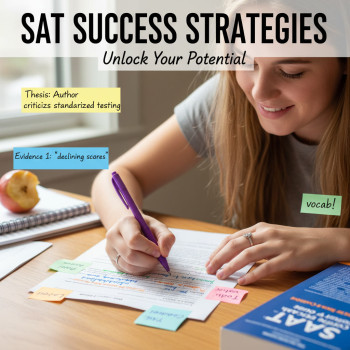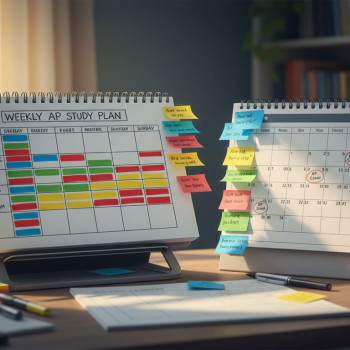AP vs SAT: Why Study Groups Matter (But Differently)
There s something electric about a room real or virtual where students gather with a single mission: to conquer a test. Whether it s the subject-specific depth of AP exams or the broad, strategy-driven nature of the Digital SAT, study groups can transform solo frustration into collective momentum. But here s the nuance: AP and SAT prep ask for different kinds of collaboration. One rewards deep, iterative discussion of concepts and evidence; the other rewards tight strategy drills, timed practice, and diagnostic feedback.

Big Picture Differences That Shape Group Work
- Purpose: AP classes test mastery of rich content and higher-order thinking in one subject. Study groups should focus on concept mastery, lab reasoning (where relevant), and essay structure. The Digital SAT evaluates reading, evidence analysis, and math reasoning with a strong emphasis on timing and format groups should focus on practice sets, pacing, and test-specific strategies.
- Time Horizon: AP exams are typically tied to coursework and occur once a year; study groups can be sustained over a semester. SAT prep can be more modular students may prepare intensively in the months before a test date.
- Assessment Style: APs often include free-response sections requiring written explanations; peer review and paired teaching are especially valuable. The SAT is predominantly multiple-choice and adaptive in the digital version, which favors timed, simulator-style practice in groups.
Designing Study Groups for AP Exams
AP study groups thrive on depth. You re not just memorizing; you re applying, synthesizing, and arguing with evidence. That means structure matters: regular meetings, rotating facilitators, and moments where each member teaches a concept back to the group.
Optimal Group Size and Composition
- Size: 3 6 students big enough for diverse strengths, small enough for meaningful participation.
- Composition: Mix of skill levels. Include at least one student who s strong in the subject and one who s currently struggling; teaching cements knowledge for the strong and accelerates growth for the others.
- Role Distribution: Assign roles like Facilitator, Timekeeper, Question Curator, and Scribe to keep sessions focused.
Weekly Session Template for AP Groups
Here s a reliable rhythm that balances review, depth, and assessment. Run a 90-minute session like this:
- 0 10 min: Check-in and agenda (what each person needs).
- 10 30 min: Warm-up quiz (short, low-stakes) to activate retrieval.
- 30 60 min: Deep-dive discussion one member teaches a concept, followed by group Q&A and common misconception mapping.
- 60 80 min: Practice FRQ/free-response or problem set with rotating partners.
- 80 90 min: Summarize takeaways and set individual tasks for the week.
Activities That Work Best for AP
- Teach-Backs: Each meeting someone presents a 10 15 minute mini-lesson with slides or a whiteboard; peers ask probing questions.
- Rubric-Based Grading Practice: Use the official rubric to grade sample free-response answers together this builds insight into what graders actually reward.
- Concept Maps: Map connections between ideas (e.g., in AP Biology or AP US History), which helps transfer learning from isolated facts to integrated understanding.
- Timed Synthesis Drills: Practice crafting concise evidence-backed responses under time pressure.
Designing Study Groups for the Digital SAT
The Digital SAT is a different animal: fewer subjects but more emphasis on strategy, pacing, and digital navigation. Study groups should be experiment-driven test, measure, adjust.
Optimal Group Size and Composition
- Size: 2 5 students. Smaller groups make timed practice and feedback faster and more frequent.
- Composition: Group together students with similar target scores or practice-test baselines so practice sessions stay relevant and morale stays high.
- Role Distribution: Time Referee, Data Recorder (tracks practice scores and error patterns), Strategy Lead.
Weekly Session Template for SAT Groups
Because the SAT rewards precision and efficiency, keep sessions lean and measurable. Try a 60 90 minute format:
- 0 10 min: Quick check-in and target for the session (e.g., reduce careless math errors).
- 10 40 min: Timed section practice (short passages or math blocks), simulating test conditions.
- 40 65 min: Immediate group review identify error patterns and alternative approaches.
- 65 90 min: Strategy drills and short mini-lessons (process of elimination, digital tools, pacing heuristics).
Activities That Work Best for SAT
- Timed Mini-Sections: Break the test into 20 30 minute segments and rotate who takes which segment to keep energy high.
- Error Journals: Maintain a shared log of every wrong question with cause (content gap, misread, arithmetic error, timing). Review weekly.
- Pacing Games: Small competitions (e.g., accuracy under 60% time) help condition speed without sacrificing accuracy.
- Digital Familiarization: Practice with the exact tools used on the test (annotation, highlighting, calculator rules) to remove friction on test day.
Common Challenges and How Groups Can Solve Them
Groups are powerful, but not automatic. Here are frequent pitfalls and practical fixes.
1. Social Loafing
- Problem: Some students contribute less and rely on peers.
- Fix: Make contribution visible rotate presentation duties and keep a shared task list so everyone s work is trackable.
2. Mismatched Goals
- Problem: Some members aim for a 5 on AP while others aim just to pass the class; SAT targets vary too.
- Fix: Set session-level goals and subgroup when necessary. Use parallel tracks in the same meeting: one corner focuses on advanced synthesis while another practices core skills.
3. Lack of Feedback
- Problem: Without accurate feedback, mistakes repeat.
- Fix: Use calibration tools rubrics for AP free responses and official answer explanations for SAT practice. Bring in a subject-matter guide (teacher, tutor, or Sparkl s personalized tutoring) periodically to audit progress and fix misconceptions.
How to Measure Group Impact: A Simple Scorecard
It s easy to feel productive without making measurable gains. Create a simple scorecard to judge whether your group time is working. Track these weekly and review monthly.
| Metric | AP Group | SAT Group |
|---|---|---|
| Average Practice Score Change | Percent improvement on FRQ rubrics or unit tests | Points gained on timed practice sections |
| Error Pattern Reduction | Fewer conceptual errors across practice essays/problems | Fewer careless or timing-related mistakes per section |
| Participation Rate | % of members who lead teach-backs each month | % of members who complete assigned timed sections weekly |
| Confidence Score | Self-reported readiness for topic at the start vs end of the month | Self-reported pacing comfort and test-day readiness |
Practical Examples: Two Real-World Group Plans
Example 1: AP Biology Semester Group (4 Students)
Meet twice weekly for 75 minutes. One session is content-focused (teach-backs, concept maps) and the other is application-focused (lab reasoning, FRQs). Use rubrics to grade sample responses and rotate who brings a past exam question. Each student commits to a weekly 30-minute solo review based on group feedback.
Example 2: Digital SAT Sprint Group (3 Students)
Meet three times weekly for 60 minutes six weeks before the test. Two meetings are for timed practice and immediate review; one meeting each week is a strategy workshop (e.g., graph interpretation, evidence pairing). Keep an error journal visible to the group and set micro-goals (e.g., cut algebraic slip-ups by 50% in three weeks).
When to Bring in Expert Support
Study groups are excellent for motivation, peer teaching, and drilling. But outside expertise becomes essential when:
- Progress stalls despite regular practice.
- There are content gaps that peers can t reliably correct.
- You want objective benchmarking or tailored study plans.
Periodic check-ins with a qualified tutor someone who can diagnose why a certain type of error recurs or build tailored pacing strategies can turn a good group into a great one. Sparkl s personalized tutoring, for example, can slot into a group routine: tutors provide one-on-one diagnostics, help create tailored role sheets for group sessions, and offer AI-driven insights that point the group to high-impact practice. That kind of targeted input is especially useful before major milestones, like AP mock exams or the final SAT run-up.
Digital Tools and Logistics That Keep Groups Productive
Leverage tech to streamline prep and track improvement:
- Shared Calendars and Agendas: Keep sessions regular and goals visible.
- Cloud Doc Repositories: Store past FRQs, practice tests, error journals, and slide decks.
- Screen-Recording or Whiteboard Tools: Save teach-backs for asynchronous study.
- Practice Test Simulators: Use a digital SAT simulator to mimic the real interface; for APs, use scanned FRQs and timed writing tools.
Maintaining Momentum and Avoiding Burnout
Long-term prep can wear down even the most motivated students. Keep your group sustainable:
- Set realistic weekly goals small wins stack up.
- Rotate leadership to spread ownership and keep meetings fresh.
- Plan short breaks and celebrate milestones (e.g., a successful full practice exam or a clear rubric improvement).
- Mix formats: alternate heavy sessions with lighter, collaborative review days.
Final Checklist: Is Your Group Built to Win?
- Clear goals: course mastery vs score targets?
- Right size and composition for the test.
- Regular, data-driven practice and immediate feedback loops.
- Defined roles and rotating leadership.
- External calibration at least monthly (teacher or qualified tutor).
- Tools and a shared scorecard for tracking results.

Parting Thought: Make the Group Work for the Test and for Each Student
AP and SAT preparation both benefit from collaboration, but the shape of that collaboration changes by test. AP groups need depth, critical discourse, and rubric-savvy practice. SAT groups need tight, measurable drills, pacing practice, and digital fluency. The best groups borrow from both playbooks pairing high-quality content review with honest, timed practice and objective feedback.
And remember: groups amplify effort when paired with occasional expert guidance. Whether you bring in a teacher for an AP rubric workshop or schedule a diagnostic with a tutor to tune SAT pacing, outside input keeps the group honest and efficient. Sparkl s personalized tutoring can provide those targeted insights one-on-one diagnostics, tailored study plans, expert tutors, and AI-driven feedback that make group time more focused and effective. When used thoughtfully, study groups become more than study time: they become learning communities that change how students approach exams and how they grow as thinkers and test-takers.
Ready to Try It?
Start small pilot a six-week plan, gather data, tweak, and then scale. Keep the atmosphere encouraging: progress feels faster in a room where questions are welcomed, mistakes are analyzed without shame, and every success, no matter how small, is celebrated. That s the magic recipe: structure + community + deliberate practice. Go build a study group that not only raises scores but makes learning stick.



















No Comments
Leave a comment Cancel